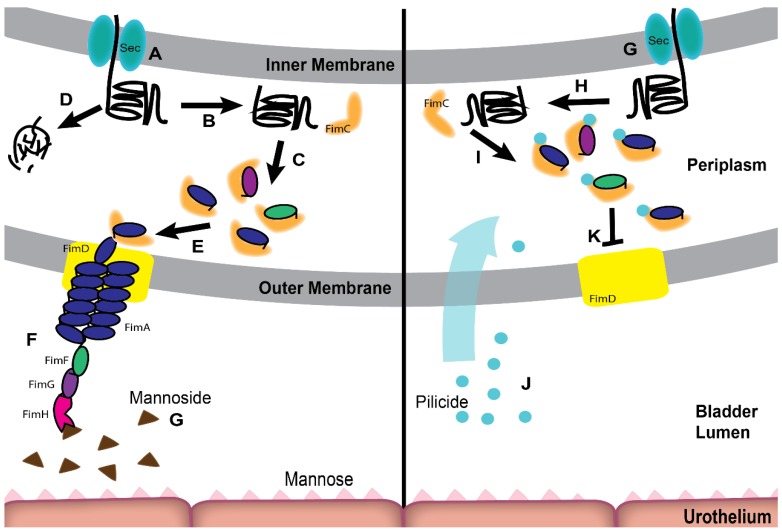Figure 2.
Mannosides and Pilicides prevent uropathogenic E. coli (UPEC) UTI by targeting the function or formation of type 1 pili. (A,G) Unfolded pilus subunits are secreted to the periplasm by the Sec apparatus. (B,H) Upon entering the periplasm, unfolded subunits immediately interact with the cognate chaperone (FimC). Subunits have an incomplete Ig-like fold which must be completed in order to properly fold. In a process called donor strand complementation (DSC) FimC donates its G1 β-stand to the subunit, stabilizing it (C,I). Subunits that do not interact with FimC are unable to fold correctly and are degraded (D). The chaperone then delivers the subunit to the outer member usher, FimD (E). Upon reaching FimD the subunit is assembled into the maturing pilus via donor stand exchange (DSE) with the adjacent pilus subunit (F). Mannosides prevent type 1 pilus function by binding, in an irreversible manner, to FimH and therefore prevent the interaction of FimH and mannose on the bladder surface (G). Pilicide works by halting pilus assembly. These molecules enter the periplasm (J) and bind to the pilus chaperone, halting assembly (K).

